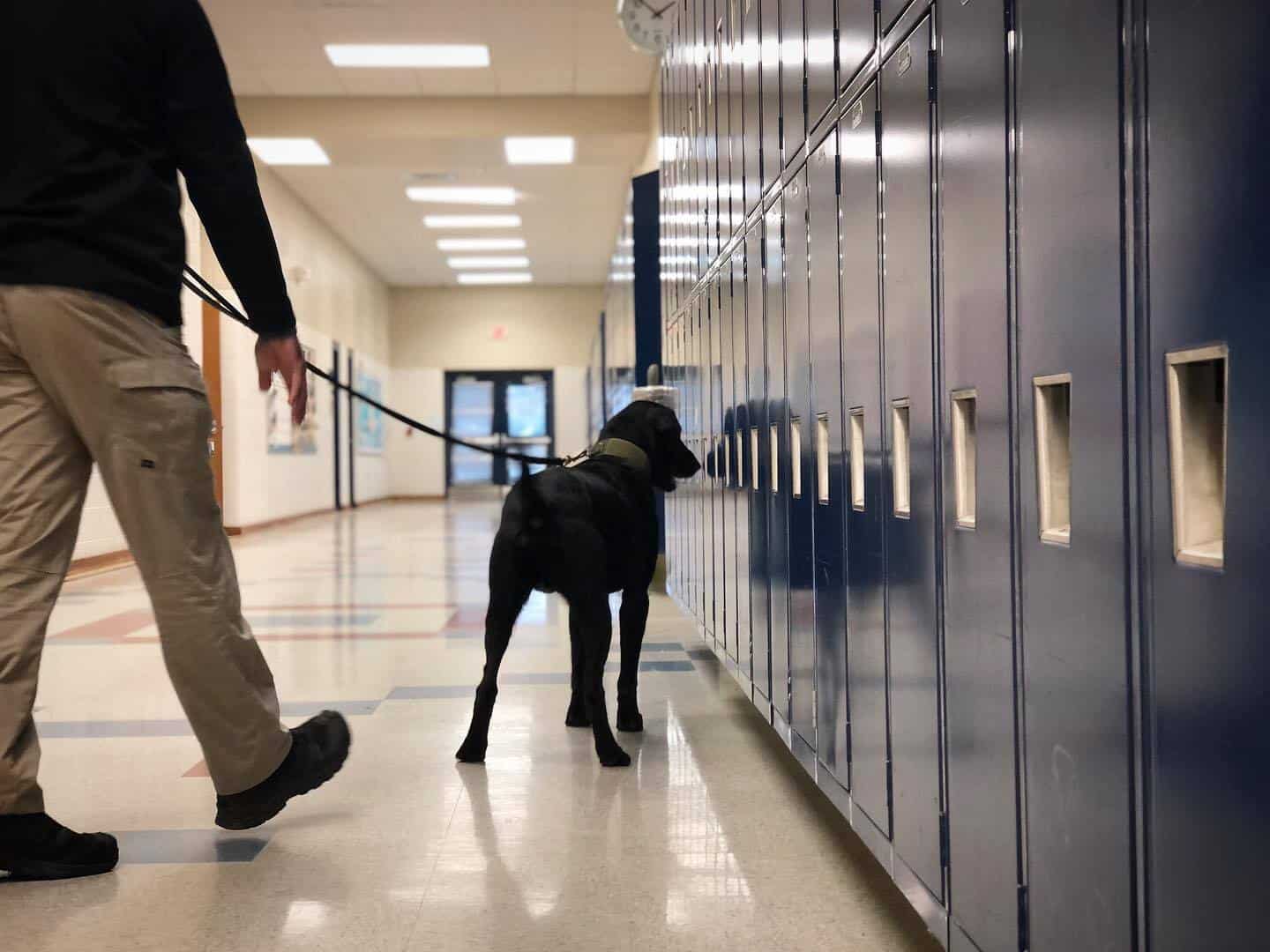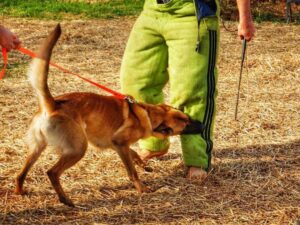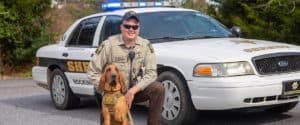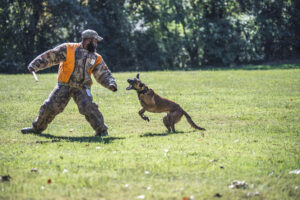Many detection dog handlers watch almost exclusively for one thing when they are working their dog: the indication, or TFR (trained final response). It is critical to know when your K9 has identified a target odor source, and where exactly that source is located, but many factors can interfere with a dog performing their final response.
Occasionally, a K9 will be confronted with significantly more or less odor than they have been trained on, or there may be other environmental factors (such as target odor placement, air movement, etc.) that can cause them to not provide their handler a TFR. In the presence of a trained target odor – even if conditions may not be ideal – a detection dog will demonstrate what’s called a “change of behavior (COB).” At its most basic form, this means that a dog’s body language will change once it goes into odor, which typically always happens just prior to the performance of their trained final response.
It is not only important to recognize your dog’s change of behavior in case they go into odor but do not indicate (this may signify the presence of residual odor, or that target odor is there but something is interfering with the K9’s ability to identify the exact location), but also in case a K9 “falses” (where they display their final indication but no target odor is present).
Why this matters for you
In order to be the most effective detection dog handler possible, it is critical to understand the importance of identifying a COB, or that moment when your dog goes into odor (and what is occurring during that time). It is more critical, however, to be able to recognize the moment that it happens and how long they are in odor for. Being able to identify the moment that your K9 goes into odor will allow you to mark that your dog showed interest in that specific area (in case you re-run them, send another K9 through or send a human team in to analyze the area in more detail). It will also communicate that there is, or was, something of interest there but something is interfering with the K9s ability to target the exact location of source.
By being able to read your dog’s change of behavior, you will know with 100% certainty that your dog is indicating on target odor, and you will be able recognize exactly where the odor is coming from. Not only will this assist you directly during deployments, but will make your dog’s indication irrefutable in court.
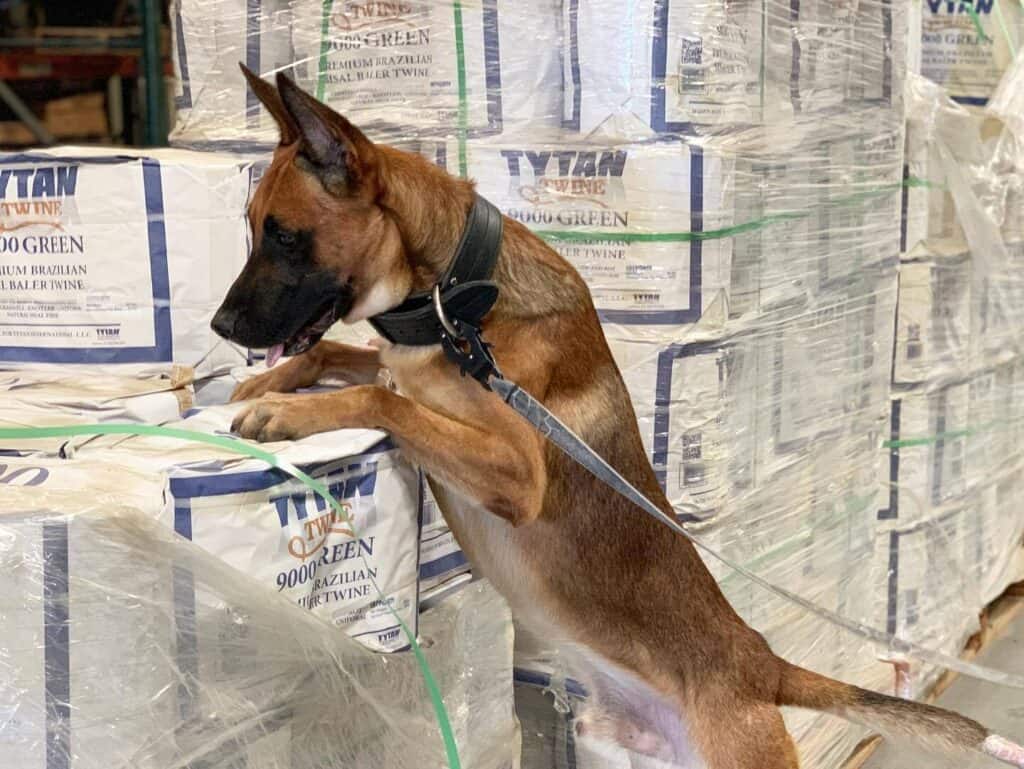
Differences in Detection Dogs
Every detection dog works differently, and changes of behavior will vary from one K9 to another. There are certain behaviors, however, that most dogs will display to varying levels when in the presence of target odor. In order to understand these behaviors, it is important to first understand the basics of how odor works and moves.
Odor molecules move similarly to smoke, as they move with air currents and pool in closed off areas just like smoke does. During handler school, we demonstrate this using smoke bombs and cars: the smoke bomb fills the car and is emitted through the seams of the vehicle. The smoke leaking out is then carried in various directions by the wind.
Odor molecules behave in a similar manner, and this provides detection dogs with a way to locate where odor is coming from. Even though they cannot see how odor moves, they do smell it and move their bodies in such a way that allows them to trail odor to the source’s scent cloud. As handlers, we can read the dog’s behavior as they work detection problems to paint a picture of what odor is doing in a particular area or detection scenario.
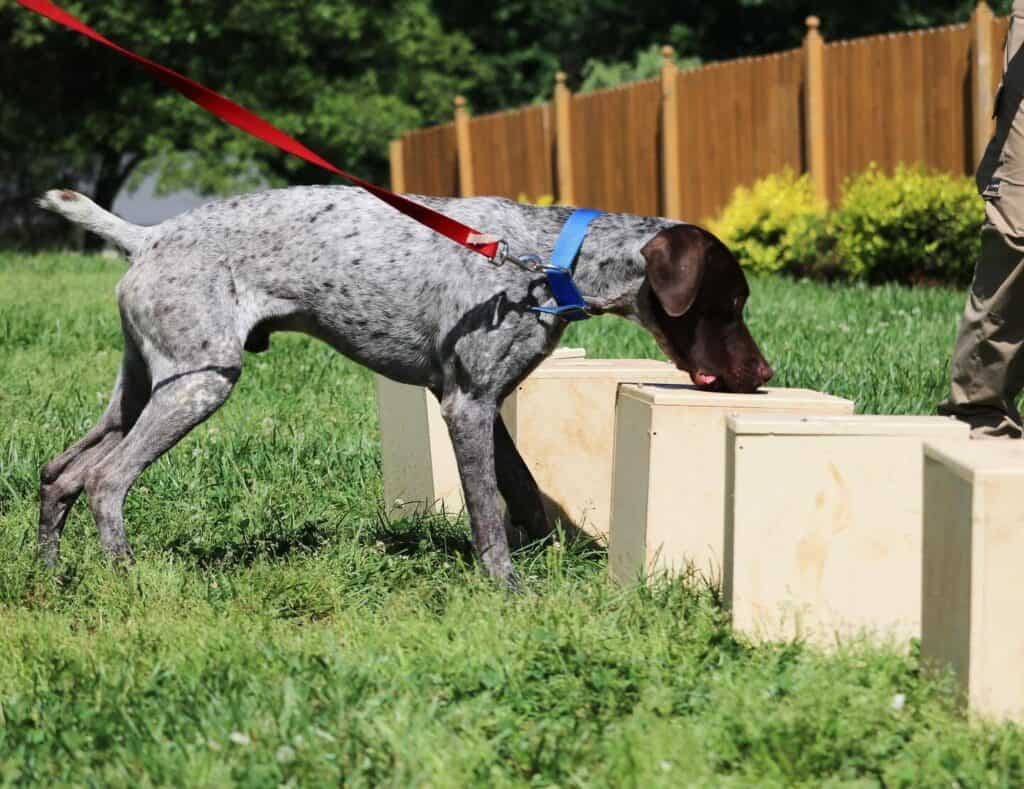
Common Behavioral Changes In Your Detection Dog
Although working styles differ from one detection dog to another, there are certain key body language signals that a majority of K9s will display once in odor. As a handler, these signals are critical to watch out for when working your dog:
- Head turn
A head turn occurs when a dog hits the edge of target odor, and consequently “snaps” its head in that direction. This is also known as a “positive indication.”
When any item sits in one place for a length of time, including target odor sources, it will create a scent cloud (or a cloud of scent that moves outward, with the most condensed odor being the source itself). Trained detection dogs are capable of recognizing a scent cloud before they actually locate its source. When a K9 comes in contact with the perimeter of a scent cloud, it will snap its head in the direction of the odor, and will typically begin to enthusiastically follow the scent. Many dogs almost appear to hit an invisible wall as they quickly change directions. - Bracketing
Bracketing occurs when a dog moves back and forth through the perimeters of a scent cloud. Dogs are capable of detecting the exact moment when no more target odor is present, so by working the cloud in this zig-zagging motion, they can narrow in on the exact location of the highest scent concentration: the source.
A handler can identify bracketing by the distinctive zig-zagging motion that their dog begins to display, followed by numerous head snaps in the opposite direction once the dog hits odor’s perimeter. Oftentimes, a dog will bracket a scent cloud back and forth, making motions increasingly smaller until they identify the exact location of source. - Breathing
Usually when a dog is working, their breathing will change when they begin searching, change again when they go into odor, and then change once more once they have identified the location of source. Many dogs begin searching by displaying active sniffing. When they enter the presence of target odor, they begin breathing louder, faster and more frantically. Once they finally locate source, most dogs breathing will slow drastically, or even stop entirely.
To figure out what your detection dog sounds like when they are working and enter into odor, work then in a quiet area (you can even turn lights off so you don’t get distracted by their movements) and listen to their breathing pattern. Breathing patterns can be an extremely important clue as to where odor is and where it is not. - Individual changes in behavior
Like humans, every dog is an individual and will provide their own unique body cues when in odor. Dogs will typically display the same pattern of cues, or similar cues each time they are in odor, so by paying attention to your dog’s unique working pattern you will learn to identify it immediately. Watch for the manner in which your dog positions their ears and tail while searching or indicating. Some dogs will even begin walking differently or changing their posture when in the presence of odor.
By taking notice of these idiosyncrasies, reading a detection dog becomes significantly easier. Many times, recognizing these details is what makes reading a dog undeniable, and a handler’s credibility is increased considerably when they can articulate these patterns. Recognizing these cues are easier when you pay attention to one area of a dog at a time while running them rather than trying to watch their body working as a whole. For example, you can choose to focus on their ears in one session, tail in the next, sniffing pattern in the next and then back legs in the next. Taking video footage of your dog working and then studying it afterwards may help as well.
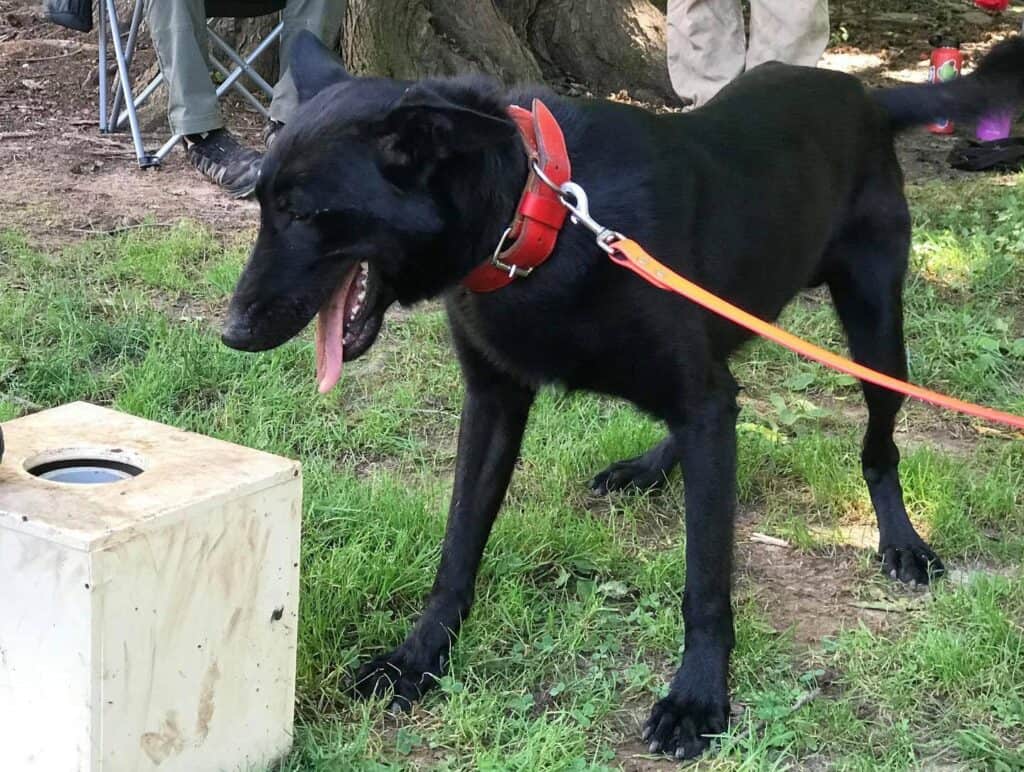
In Conclusion
There are many cues for handlers and trainers to look for when working detection dogs. Many of them are similar from one dog to another, but paying close attention to an individual dog will enable you to quickly recognize their specific working style and pattern. If you are curious about different types of detection dog patterns, watch other teams work. What do the dogs do? At what point do they begin to bracket or demonstrate a head turn? What does their breathing sound like while they are working?
Handlers capable of effectively reading their dog can not only confidently call hides vs blanks, but are also able of articulating their dog’s cues in real world scenarios. Reading your detection dog can become very straightforward if you take the time to look for the cues listed in this article and understand when they occur and why.

